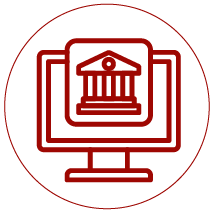Treasury management is a crucial function in the banking industry as it involves managing financial assets and liabilities to efficiently balance risk and maximize profitability. Effective treasury management plays a vital role in ensuring the stability and success of the corporate banking clients that a financial institution supports.
Introduction
Treasury management priorities for leading banking institutions
The increasing demands from corporate and business customers are reshaping the banking landscape, particularly in treasury management and front-end solutions. Here is a breakdown of the key priorities that are driving a need for innovation:

1. New Feature/Functionality
Customers expect banks to offer advanced features and functionalities that enhance their experience. This includes robust mobile app capabilities for seamless transactions on-the-go.

3. Direct Bank Connectivity
There’s a growing preference for direct connectivity between businesses and banks, bypassing intermediaries where possible. This improves efficiency and reduces transaction costs.

5. Faster Implementations with Minimal Disruption
As banks adjust their strategies to align with customer expectations, there’s a pressing need for faster implementation of new technologies and solutions. This should be done with minimal disruption to existing clients, ensuring continuity and smooth transition.

2. Better Security
With the rise in cyber threats, improved security measures are crucial.
Banks need to ensure that their systems are resilient against potential breaches and fraud.

4. Modernization Wave
To meet these demands, banks are undergoing a wave of modernization. This involves upgrading their treasury management systems and other front-end solutions to offer more integrated, efficient, and user-friendly services.
In summary, banks are focusing on enhancing their technological capabilities to meet the evolving needs of corporate and business customers. This includes improving mobile app functionality, strengthening security measures, enabling direct bank connectivity, and undertaking rapid modernization efforts to stay competitive in the digital age.
Strategic roadmap for a successful Treasury management digital implementation
Developing a strategic roadmap for digital platform adoption involves several key steps to ensure alignment with business goals and successful implementation. Here is a structured approach:

Assessment of Current State
- Collaborate with Stakeholders: Partner closely with bank product managers and executive teams to gain insights into the current digital technology landscape. Understand existing platforms, technologies in use, and their effectiveness.
- Client Engagement: Engage with clients to gather feedback on their experiences with current digital solutions. Identify pain points, desired functionalities, and areas for improvement.
- Technology Audit: Conduct a thorough audit of existing digital platforms and infrastructure. Assess scalability, security, integration capabilities, and compliance with regulatory requirements.
Define Strategic Objectives
- Business Goals Alignment: Align digital platform adoption with overarching business objectives. Determine key outcomes such as improving customer experience, increasing operational efficiency, or enhancing security measures.
- Client-Centric Approach: Develop a deep understanding of client needs and expectations regarding digital services. Tailor the roadmap to address specific pain points and deliver tangible value to clients.
- Innovation Vision: Define a clear vision for technological innovation within the organization. Outline how digital platforms will support future growth, innovation initiatives, and competitive differentiation.


Build the Roadmap
- Prioritization Framework: Establish a prioritization framework to navigate competing priorities and technologies effectively. Consider factors such as client demand, market trends, regulatory requirements, and internal capabilities.
- Phased Implementation: Structure the roadmap into manageable phases with clear milestones and timelines. Prioritize quick wins that deliver immediate benefits while laying the foundation for long-term strategic goals.
- Risk Assessment: Identify potential risks and challenges associated with each phase of implementation. Develop contingency plans to mitigate risks and ensure continuity of service for clients.
Create Business Case and Implementation Plan
- Financial Justification: Develop a robust business case demonstrating the ROI of digital platform adoption. Quantify potential cost savings, revenue growth opportunities, and enhanced client satisfaction metrics.
- Resource Allocation: Determine resource requirements including budget, staffing, and technology investments. Ensure alignment with overall budgetary constraints and resource availability.
- Change Management: Develop a comprehensive change management plan to facilitate organizational readiness and minimize disruption. Communicate the benefits of digital transformation to stakeholders and address potential resistance.


Monitor and Adapt
- Performance Metrics: Define key performance indicators (KPIs) to measure the success of digital platform adoption. Monitor metrics related to client satisfaction, operational efficiency, and financial outcomes.
- Continuous Improvement: Foster a culture of continuous improvement by gathering feedback from clients and internal stakeholders. Use insights to refine the roadmap, optimize processes, and incorporate emerging technologies.
By following this structured approach, banks can effectively roadmap their digital platform adoption, aligning technology initiatives with strategic business goals and enhancing client satisfaction through innovative digital solutions.
Overcome your treasury management challenges
To accelerate online treasury management initiatives effectively for our banking clients, R88 partners with leading platform providers like ACI Worldwide, Dragonfly Financial Technologies, Bottomline Technologies, Fiserv and Q2 Inc., and utilize a strategic approach:
By following this structured approach, R88 can accelerate our client’s online treasury management initiatives effectively, leveraging partnerships with leading platform providers to deliver enhanced capabilities, optimize processes, and improve visibility and speed for financial firms and their clients.
Treasury management critical success factors - finding the right partners
Partnering with technologists who have deep expertise in commercial banking is crucial for successfully navigating and implementing digital transformation initiatives. Here is how you can effectively collaborate with these teams:

Identify Key Stakeholders
- Principal Consultants: Engage with principal consultants who specialize in various areas such as treasury management, payments, lending, and cards. Leverage their expertise to understand industry best practices, regulatory requirements, and technological advancements.
- Subject Matter Experts (SMEs): Collaborate with SMEs who possess in-depth knowledge in specific domains such as product management, technology architecture, cybersecurity, and program management. Tap into their insights to develop tailored solutions and mitigate implementation risks.
- Former Commercial Banking Executives: Benefit from the experience and strategic perspective of former commercial banking executives. They can provide valuable insights into client expectations, market dynamics, and competitive landscape within the commercial banking sector.
Establish Collaborative Partnerships
- Cross-Functional Teams: Form cross-functional teams comprising technologists, consultants, SMEs, and former executives. Foster collaboration and knowledge sharing to collectively address complex challenges and drive innovation.
- Workshops and Brainstorming Sessions: Conduct workshops and brainstorming sessions with these teams to identify technological opportunities, prioritize initiatives, and develop comprehensive strategies aligned with business goals.


Define Roles and Responsibilities
- Clear Communication: Ensure clear communication of roles and responsibilities across the partnership. Define expectations regarding contributions, decision-making authority, and accountability to maintain alignment throughout the project lifecycle.
- Utilize Diverse Perspectives: Capitalize on the diverse perspectives and specialized knowledge of each team member. Encourage open dialogue and constructive feedback to foster creativity, problem-solving, and continuous improvement.
Execute Strategic Initiatives
- Agile Methodology: Implement agile methodologies to facilitate iterative development, rapid prototyping, and timely adjustments based on feedback. Enable quick deployment of minimum viable products (MVPs) to validate assumptions and accelerate time-to-market.
- Risk Management: Collaborate closely with risk management experts to proactively identify and mitigate potential risks associated with technology implementation, regulatory compliance, data security, and operational resilience.


Measure Success and Iterate
- Performance Metrics: Define key performance indicators (KPIs) to monitor the success of digital transformation initiatives. Measure outcomes related to client satisfaction, operational efficiency, revenue growth, and risk management effectiveness.
- Continuous Learning: Foster a culture of continuous learning and adaptation within the partnership. Encourage ongoing professional development, knowledge exchange, and exploration of emerging technologies to sustain competitive advantage.
By partnering with technologists who are well-versed in commercial banking and leveraging their diverse expertise, banks can effectively drive digital innovation, enhance client engagement, and achieve sustainable growth in the rapidly evolving financial services industry
let's begin your digital transformation

R88 has been on the cutting edge of technological innovation in fintech serving the banking and financial services industry, through all aspects of retail and commercial banking, including digital channel transformation, payments, core banking software and outsourcing, enterprise distributed software and beyond. Our experts help our clients navigate even the most challenging aspects of selecting and implementing new technology, saving them time, frustration, and financial resources.







